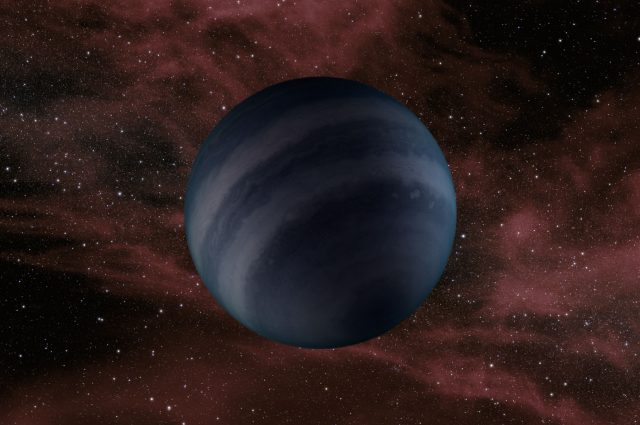Scientist calculates the 'sad, lonely' end of the universe
'It's like saying the word 'trillion' almost a hundred times.'
Stars will continue to explode long after the universe is cold and "dead," one scientist determined in diving down the rabbit hole to find the last supernova that will ever happen.
When the universe as we know it "dies," it will be "a bit of a sad, lonely, cold place," theoretical physicist Matt Caplan, an assistant professor of physics at Illinois State University, said in a statement. In a new study, Caplan calculated how dead stars might change over time and determined when the last supernova will explode in the universe's distant future.
The universe's end is "known as 'heat death,' where the universe will be mostly black holes and burned-out stars," Caplan explained in the statement. "I became a physicist for one reason. I wanted to think about the big questions — why is the universe here, and how will it end?"
Related: Supernova Photos: Great Images of Star Explosions
It's like saying the word 'trillion' almost a hundred times.
— theoretical physicist Matt Caplan
In the new study, Caplan looked to the future of stellar explosions. Massive stars explode in supernovas when iron builds up in their core, accumulating and triggering the star's collapse. But smaller stars such as white dwarfs — ultradense stellar corpses that form when sunlike stars exhaust all of their nuclear fuel — don't have the gravity and density to produce this iron. However, Caplan found that, over time, white dwarfs might become denser and become "black dwarf" stars that can actually produce iron.
"As white dwarfs cool down over the next few trillion years, they’ll grow dimmer, eventually freeze solid, and become ‘black dwarf’ stars that no longer shine," Caplan said. “Stars shine because of thermonuclear fusion — they’re hot enough to smash small nuclei together to make larger nuclei, which releases energy. White dwarfs are ash, they’re burnt out, but fusion reactions can still happen because of quantum tunneling, only much slower."
Quantum tunneling is a phenomenon in which a subatomic particle "tunnels" through a barrier that seems impossible to penetrate when it disappears reappears on the other side of the barrier.
Breaking space news, the latest updates on rocket launches, skywatching events and more!
Caplan noted that this fusion is key for creating iron within black dwarfs and triggering this type of supernova.
The new study shows how much iron black dwarfs of different sizes would need to create in order to explode. Caplan calculated that the first of these "black dwarf supernovas" will explode in about 10 to the 1,1000th years — an almost inconceivably large number. "In years, it’s like saying the word ‘trillion’ almost a hundred times. If you wrote it out, it would take up most of a page. It’s mindbogglingly far in the future," he said.
He found that the most massive black dwarfs will explode first, followed by less and less massive stars until there are none left, which he expects will be in about 10^3,2000 years. "It’s hard to imagine anything coming after that," he said. "Black dwarf supernova might be the last interesting thing to happen in the universe. They may be the last supernova ever."
So what will the "sad, lonely" universe be like at this point, after the last supernova has exploded? According to Caplan, "Galaxies will have dispersed, black holes will have evaporated, and the expansion of the universe will have pulled all remaining objects so far apart that none will ever see any of the others explode. It won’t even be physically possible for light to travel that far."
This study was published Aug. 7 in the journal Monthly Notices of the Royal Astronomical Society.
Email Chelsea Gohd at cgohd@space.com or follow her on Twitter @chelsea_gohd. Follow us on Twitter @Spacedotcom and on Facebook.

Chelsea “Foxanne” Gohd joined Space.com in 2018 and is now a Senior Writer, writing about everything from climate change to planetary science and human spaceflight in both articles and on-camera in videos. With a degree in Public Health and biological sciences, Chelsea has written and worked for institutions including the American Museum of Natural History, Scientific American, Discover Magazine Blog, Astronomy Magazine and Live Science. When not writing, editing or filming something space-y, Chelsea "Foxanne" Gohd is writing music and performing as Foxanne, even launching a song to space in 2021 with Inspiration4. You can follow her on Twitter @chelsea_gohd and @foxannemusic.

